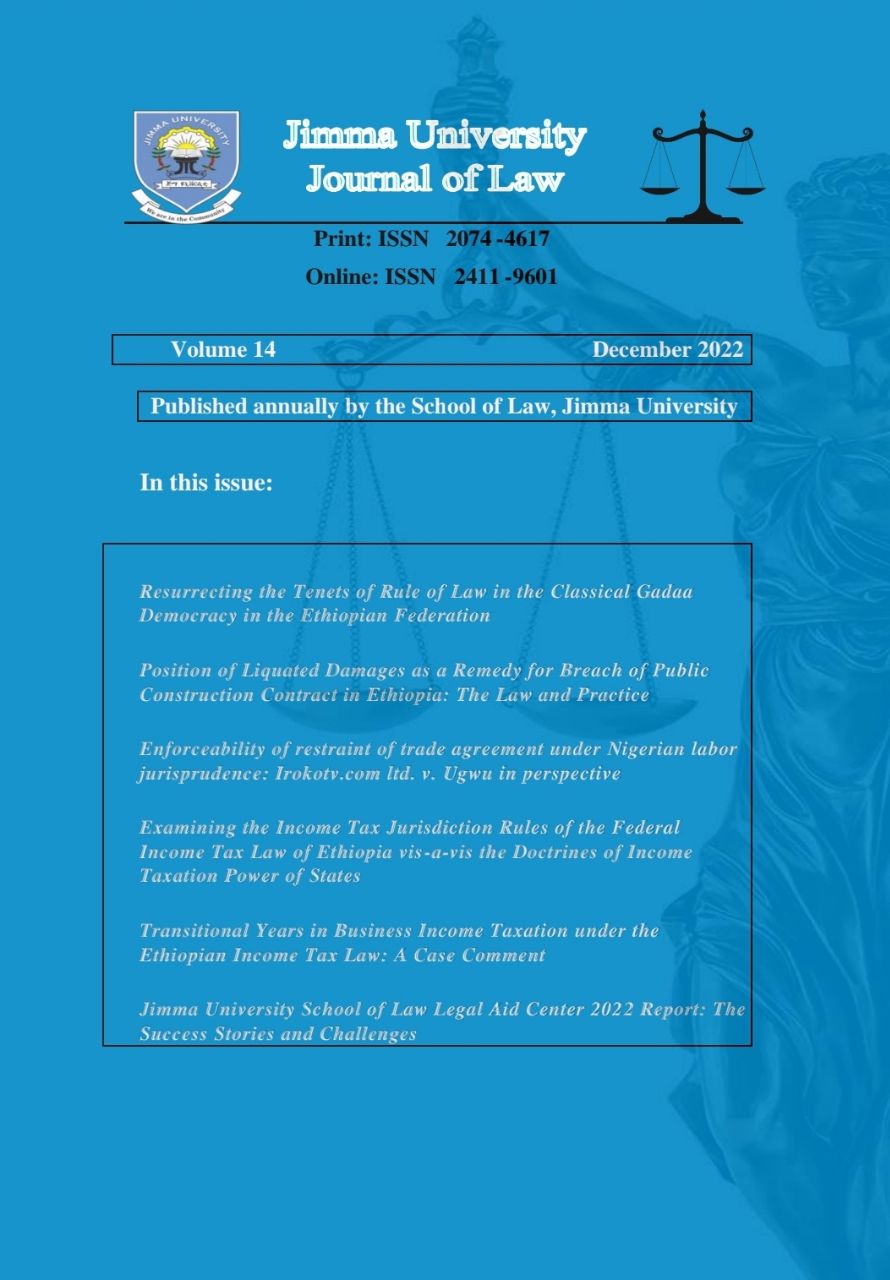Transitional Years in Business Income Taxation under the Ethiopian Income Tax Law: A Case Comment
Abstract
Profit taxes conventionally are paid annually. However, in case of a change in taxpayers’ accounting years, the time between the end of the last year and the beginning of the new year is taxed separately as a transitional year. This comment addresses the issue of whether a change in tax rates can have a similar effect of creating two separate transitional years within a tax year. To this end, a review has been made of the relevant provisions of income tax law, related literature, and comparative lesson from the U.S. experience. A dispute occurred in ERCA v MIDROC Gold (Federal Supreme Court Cassation Division, File No. File No. 130705,07 Sep. 2017) because the mining income tax rate was reduced from 35% to 25% on 26 July 2013, bifurcating the tax year of 2013. The Federal Tax Appeal Commission, the Federal High Court, the Federal Supreme Court, and the Federal Supreme Court Cassation Bench all decided that mining income taxes are paid on the aggregate annual taxable income not by dividing the year into months. Although the mining income tax law has been incorporated into the new income tax law since 2016, the relevance of the precedent in this case that tax years are indivisible endures. This author disagrees with the above decisions and argues that a clear provision in the income tax law for transitional years in case of a change in tax rates effective in the middle of tax years is necessary.





